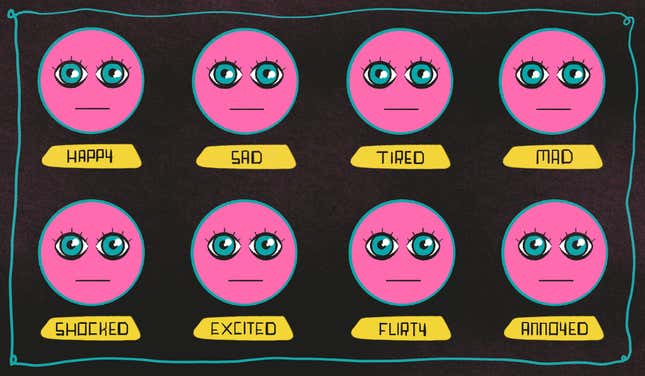

About a year ago, I got botulinum toxin injected into my face for the first time. As a woman of the aughts, this seemed almost like an inevitability, especially once I moved to Los Angeles, the land of face modification and cheap med spas. Here, you can walk into a clinic and get Botox on demand for around $10 a unit, which is pretty casual and cheap for a medical procedure. My reasons for doing it back then were multifold: first, I’d been asking various dermatologists for years if they thought I was “ready” for Botox. I never knew exactly what I meant, but hoped the experts would have an opinion, which of course they did not.
“Do you feel ready for it? What issues are you trying to address?”
I didn’t really feel ready for it. And the issue was aging in a society that cannot wait to toss me in a dumpster at the first sign of decline.
I’d also heard something about there being an injection point above your brows that can help you achieve a bit of a brow lift. I like my brows just fine, but my eyelids can appear droopy, and this sounded like an easy fix. Also, I’m just fucking curious! Aren’t we all curious about how much “better” we could look if we gave it a try? Actually doing it is another thing, but I have very little patience once I’ve decided to dip my toe into something. So I called the fanciest med spa in my neighborhood and headed in for a consultation.
Long story short: the actual procedure takes about five minutes and a tiny bit of the type of pain we are all used to—that of a typical injection. In my hood, it costs anywhere from $200 to $500 a pop, give or take, depending on your proximity to Beverly Hills. (The dosages are in “units,” which are proprietary, so who knows exactly how much botulinum toxin each one contains. But I gather from my conversations with clinicians that on the low end you’re looking at 10 units, average is 40, and it can go up from there. The effects last anywhere from three to six months, possibly longer.)
At that first appointment, I was hesitant to get the whole shebang. All I really wanted was a little eye opener and maybe for that permanent, angry crease between my brows to be softened. When I smile, my crows feet are long and prominent, but they are also the signature ingredient to the outward expression of my happiness. The reverse is true of my scowl lines, or “the 11s,” as Botox marketers have rebranded them. I wasn’t interested in stunting my full smile capabilities, but maybe not being able to scowl could win me some new friends, or a promotion, or some sex, or something? I was relieved to hear I’d only need 20 units.
Also, I thought, I’m a beauty editor and Botox is one of the biggest things to happen to the beauty world in centuries. What am I waiting for?
The history of Botox is kind of hilarious. Botulism was first discovered in some rotten blood sausages back in 1820. (Can you even imagine?) The maniac who discovered it then went on to inject himself with varying amounts of the poisonous organism, just, you know, to see what it could do. He found that it caused paralysis, which could be deadly. Then, in the late 1800s, someone brought a bad ham to a post-funeral dinner party in Belgium and some people died. Another mad scientist caught wind, and bingo-bango, he did a bunch of research and eventually all of the different strains of botulism were sussed out and named.
From there, of course, we tried to figure out a way to use it as a weapon. During World War II, some evil geniuses devised a plan to have prostitutes sneak botulism capsules into the cocktails of high-ranking Japanese military personnel, but the plan never materialized. Eventually, someone was like, “Hey, remember that paralysis stuff from a hundred years ago? Let’s chill on the warmongering for a second and see if we can do anything kindhearted and revolutionary with this.” And then they did. The first major medical use of botulinum toxin took hold in the early ‘80s: a treatment for strabismus, or crossed eyes. By essentially relaxing specific muscles which control movement in the eye, it was finally possible for some patients to avoid risky surgeries. Oh, and hey, guess what was a “lucky” side effect? No more frown lines. Voila. It was approved by the FDA for cosmetic use in 2002. Twelve years later, I went in for my first injection.
The results were incredibly disappointing. The brow lift caused me to look a little bit like Angelina Jolie’s Maleficent and my frozen forehead felt heavy and numb, like it had gone to the dentist. I was bummed, so I waited it out and eventually got my original face back.
Fast forward to this year: I’m feeling, and looking, like shit lately. (This is according to me, the world’s foremost expert on me.) I’d gone through a breakup, I was suffering from insomnia, I was parenting a toddler, and I’d gotten another year older. I wanted to try again. Maybe I hadn’t done it right the first time, I reasoned. Maybe my timidity had kept me from getting the “right” amount of Botox. How could this procedure be so popular and ubiquitous, after all, if it didn’t deliver on its promise of restoring youth and beauty?
This time I went to a cheapy joint where it cost me less than $275 to have 40 units injected around my eye area. (Luckily, I have bangs right now so there was no need to do the entire forehead.) Before you admonish my choice to Botox on a budget, let me first say that I have the money I have and nothing more. I’m doing the best I can. And also, it felt exactly the fucking same as the first, more expensive place, except this time, because I went whole hog, the effects were even more severe. The nurse poked me a couple of times between my brows, a few times above them, and several—I’d say five or six?—times around the area where I have crows feet. Some of the shots hurt, some I didn’t feel at all. By the time I looked in the mirror there was very little evidence anything had happened at all. I was in and out in 15 minutes.
“Peak Botox,” as I’ve just decided to label it, happens about five days later, once the toxic bacteria have had enough time to fully block your nerves from sending signals to muscles in the affected area. The paralysis persists for about three months, at which point you begin to slowly regain control of your muscles over the course of weeks or months.
A brief rundown of what I hate about my face right now: I cannot scowl, and I love to scowl. Here I am, trying to scowl.
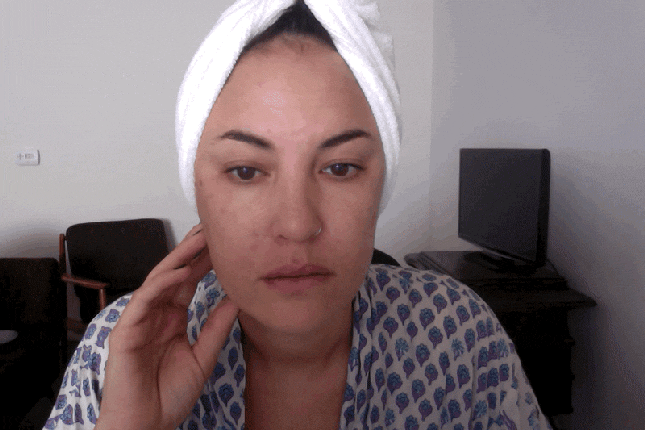
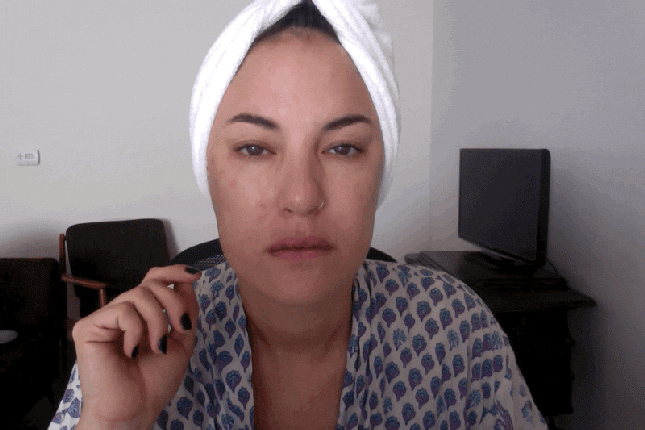
I also cannot squint into the sun—a real problem in So Cal:
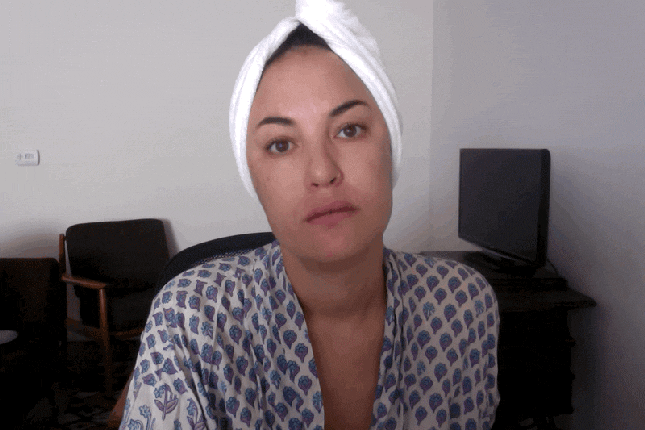
I cannot smile in a genuine fashion because I’m unable to feel the muscles that lift my cheeks up into their happy place:
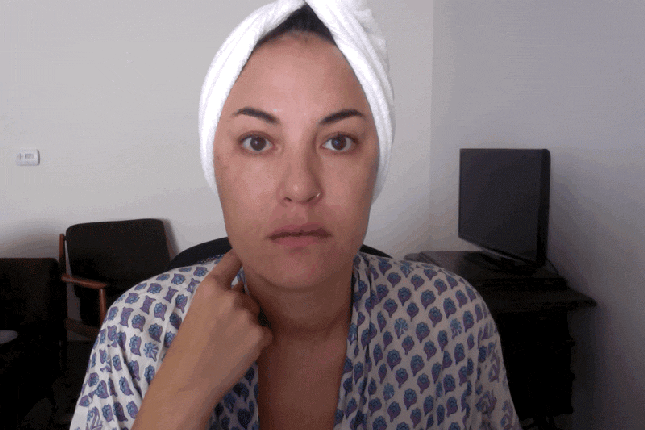
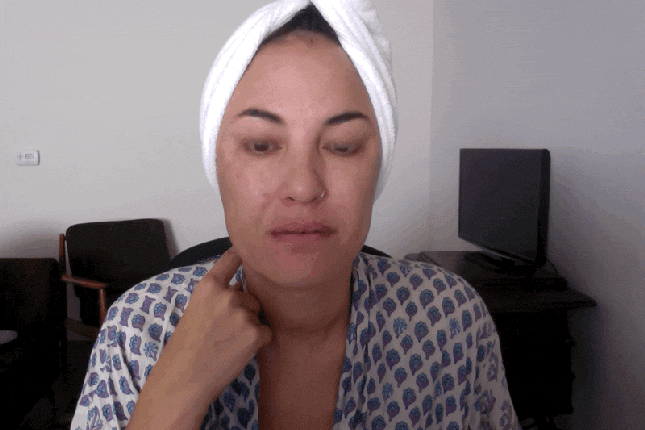
Worst of all, I can’t properly emote. During dinner the other night, a friend was recounting a harrowing tale of trauma she had recently endured, and I had to stop her mid-story.
“I apologize,” I told her, “but I had my face frozen so you aren’t seeing what I’m really feeling right now which is shock and sadness and horror. Just know that I love you?”
I repeated modified versions of this refrain to my therapist, to my ex, to my mother and sister. One of them admitted to having it done to alleviate migraine pain, so here, buried deep in this story, is a disclaimer: there are plenty of medical uses for Botox aside from treating strabismus, and I’m not addressing or criticizing those here. We’re strictly talking about the use of Botox for cosmetic enhancement.
The past few weeks have actually been not just physically odd, but emotionally trying. I’m severely self-conscious for the first time since high school. Not being able to feel a part of your body that you use constantly as a means of relating to other people is intensely frustrating. (Scarily, there’s evidence that not being able to express empathy through mimicry and mirroring inhibits the ability to feel empathy. Yikes.) I feel sort of like a mannequin come to life, and it’s a creepy, out-of-body experience. Unlike with my friends and the guy at Starbucks and my cab driver, I can’t really explain to my two-year-old why her mom’s face doesn’t move the way it used to; why I can’t do any of this fun stuff she’s so fond of:
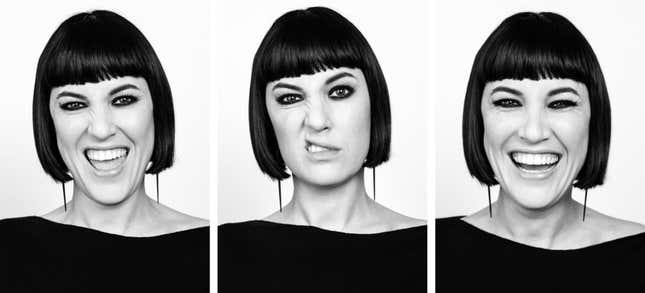
Lucky for me, and for her, she probably won’t remember these months.
So, the million-dollar question: did I get any younger or prettier looking as a result of this procedure? In the opinion of the world’s expert on my face, it did not in any way make me more attractive. In fact, by crippling my expressions, I kind of look like a different person; a dispassionate woman whose smile I don’t recognize and who dare not show outward disgust as often as I like to. At best, I appear “nice” and “vacant;” two descriptors I resent and actively shun.
Being trapped inside my own face has given me a new perspective on the popularity of Botox. I’ll present a half-baked theory to you here: I believe it is a tool of oppression, no less sinister and insidious for the fact that its users willingly self-administer. The primary function of Botox is to paralyze faces, locking our feelings and natural reactions inside stony facades. And it is overwhelmingly women’s faces being frozen: of the roughly six and a half million Botox procedures performed in 2014, only about 6 percent were administered to male patients. And, yes, obviously, contrary to my experience, many of those women believe it does make them prettier (or have pursued it for reasons that aren’t strictly cosmetic). Fair enough. But hidden in that belief is the nefarious notion that stifling our ability to express emotion is a key ingredient of beauty.
If you watch any popular reality shows starring middle-aged women, you’ll see that they regularly accuse each other of being phony, of shedding crocodile tears, of iciness and cunning. I want to defend those women. It’s not that they are actively choosing to hoodwink audiences and friends alike; they are themselves being duped and imprisoned in the pursuit of everlasting youth and beauty. They’re being told, as we all are, that a frozen face is a beautiful face and it’s bullshit. No wonder they have to scream hysterically and flip tables to get their feelings heard.
Fillers, though? Fillers are great. Luh you, fillers.
It’s going to be a long three months.

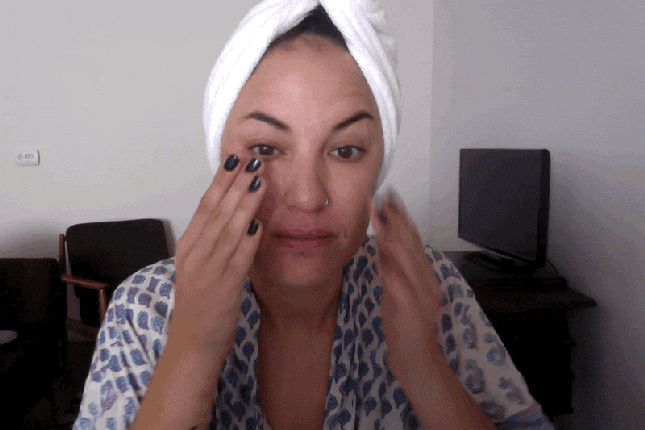
Contact the author at [email protected].
Illustration by Tara Jacoby.
Triptych by Jane Houle.